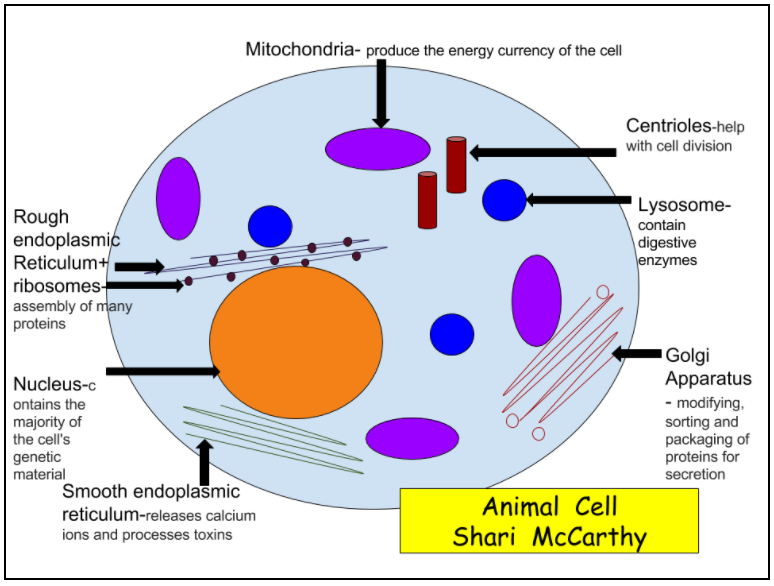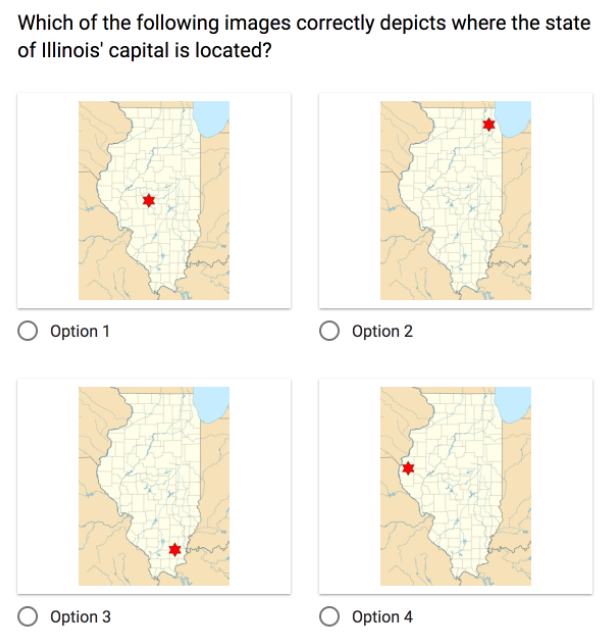In my work as an instructor for EdTechTeacher, I have the pleasure of working with teachers from all over the country in both face-to-face workshops and online learning modules. As the teachers and I work together to explore new ideas, strategies, and tools, we learn and grow together.
 Recently, a Webster Public Schools cohort of teachers were exploring Google Drawings in an online learning module I created. As we discussed ways to utilize Google Drawings in an educational setting, we explored student and teacher uses of the program. Through our discussions, I began to consider how the combination of Google Drawings and Google Forms could be a powerful way for teachers to customize assessments in ways that students will more successfully decipher and learn from them.
Recently, a Webster Public Schools cohort of teachers were exploring Google Drawings in an online learning module I created. As we discussed ways to utilize Google Drawings in an educational setting, we explored student and teacher uses of the program. Through our discussions, I began to consider how the combination of Google Drawings and Google Forms could be a powerful way for teachers to customize assessments in ways that students will more successfully decipher and learn from them.
One of the science teachers at Bartlett High School, Shari McCarthy, created an awesome image of a cell that she shared with the group in the discussion forum. She challenged her Biotechnology students to create a similar drawing. The requirements for the “Cell-fie” project included creating a “well-labeled model drawing of a plant or animal cell that clearly identifies the structure and function of the organelles in a cell.”
In her discussion post, Shari explained:,
“I actually used this Google Drawings module to reinvent an old lesson. In Biotechnology, students need to know the main organelles of the cell, something they have studied in biology since middle school. There are various ways on the web to practice cell organelles and their functions, but I tweaked a lesson to include google drawings. Here is my example and a screen shot of the assignment. The students were given the option of this Google Drawing assignment or a hand drawn 'cell-fie'. The submissions were about a 50/50 split. I also allowed students to try other online drawing programs if they chose.”
As we corresponded about her “Cell-fie” project, Shari explained that she really liked using Google Drawings because most standardized tests use obscure, rudimentary drawings that never resemble the textbooks. She felt that this type of activity requires student interpretation - a skill that they rarely get to practice.
The concept of using a teacher-made image that was created or annotated in Google Drawings immediately resonated with me, and I started thinking about the power of the combination of Google Drawings and Google Forms. Now that images can be integrated into both the questions and responses in Google Forms, teachers can completely customize their assessments or activities with images created in Google Drawings.
 In the accompanying image, Bartlett High School teacher Sean Hansen uses arrows to annotate a map for his students. Sean says, “The ability to annotate images on Google Drawings is one of its greatest attributes in my opinion! Google Drawings seems like a great tool to use with my 9th grade students to help them visualize concepts and make maps really pop, which is what I've attempted to do here. I took a map that highlights the wide array of ethnic groups that lived within the borders of Austria-Hungary just prior to the outbreak of World War I and created color-coded arrows to provide an extra visual that showcases where these groups resided within the empire.”
In the accompanying image, Bartlett High School teacher Sean Hansen uses arrows to annotate a map for his students. Sean says, “The ability to annotate images on Google Drawings is one of its greatest attributes in my opinion! Google Drawings seems like a great tool to use with my 9th grade students to help them visualize concepts and make maps really pop, which is what I've attempted to do here. I took a map that highlights the wide array of ethnic groups that lived within the borders of Austria-Hungary just prior to the outbreak of World War I and created color-coded arrows to provide an extra visual that showcases where these groups resided within the empire.”
Once created, the image can be downloaded in a variety of formats including a JPG. A JPG can be stored on a local hard drive or in Google Drive and can quickly and easily be imported into a Google Form for analysis. Teachers can also create images to be used as possible correct and incorrect responses in a Google Form. For example, in the screenshot of the Google Form, the teacher is asking students to identify the capital of Illinois. The four response options were created in Google Drawings by placing a red star in different locations on the Illinois map.
Conversely, an image could be part of the question in a Google form as shown in the accompanying screenshot. In that question, the image of the girl and the water was annotated with thought-bubbles by using the drawing tools in Google Drawings.
As Shari and Sean have discovered, as these form examples demonstrate, Google Drawings has great power to help students develop their knowledge and skills. Combined with Google Forms, it becomes a powerful, customized assessment experience.


